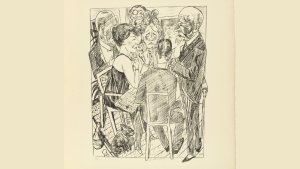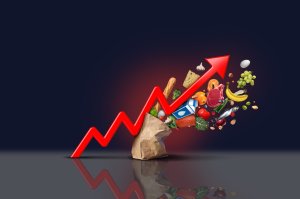From Indonesia and Malaysia to Italy, politically connected firms are more valuable than their less fortunate competitors.1 Yet a key event in the history of the twentieth century has not been examined in terms of the value of political connections—the Nazi rise to power. We systematically assess the value of prior ties with the new regime in 1933. To do so, we combine two new data series: A new series of monthly stock prices, collected from official publications of the Berlin stock exchange, and a second series that uses hitherto unused contemporary data sources, in combination with previous scholarship, to pin down ties between big business and the Nazis. We consider both active managers (the Vorstand) and supervisory board members (Aufsichtsrat). Our data reveal that many more large firms had ties with the National Socialist German Workers’ Party (NSDAP) than suggested by ear- lier scholarship—to the extent that weighted by capitalization in 1932, more than half of listed firms on the Berlin stock exchange enjoyed close links with the Nazi movement.
These two new data sets allow us to examine the reaction of investors to the Nazi “seizure of power.” If close ties with the new government—as perceived by German stock market investors in 1933—were valuable to the firms in question, their share prices should have outperformed the rest of the market. We thus try to of- fer a quantitative answer to the question, How much was it worth to have close, early connections with the Nazi party? The answer is—a great deal. Affiliated firms outperformed the stock market by 5% to 8% and account for a large part of the market’s rise. Investors recognized value where they saw it and rewarded firms with preestablished ties handsomely. This demonstrates that the connections we document mattered—investors’ willingness to pay for connected firms was markedly higher by mid-March 1933 than before the thirtieth of January.
Our results relate to an earlier literature that focused on the connections between big business and the NSDAP during the Great Depression. Following the conviction of influential indus- trialists such as Friedrich Karl Flick, Alfried Krupp, and I. G. Farben executives in the Nuremberg trials, much of the literature took it for granted that major German firms had financed the Nazi party’s rapid rise after 1930. Autobiographies of leading figures such as Fritz Thyssen’s I Paid Hitler (1941) reinforced this impres- sion.2 From the late 1960s onward, this consensus was challenged by Henry A. Turner. His German Big Business and the Rise of Hitler argued that before 1933, contributions from large corpo- rations were rare. Only a handful of prominent business lead- ers had made substantial donations. The party was largely self- financing. Political contributions were a way to hedge bets, and many right-wing parties received funding.3 There was no “smok- ing gun” linking big business with the rise of Hitler. Although some authors have questioned Turner’s reading of the evidence, the consensus now is that the links between big business and the Nazis were much more tenuous and ambiguous than previously assumed.4
Our findings relate to two other literatures as well. Recent work on Indonesia and Malaysia has analyzed the value of polit- ical connections in developing countries using event-study meth- ods in the context of the East Asian financial crisis. It offered a natural experiment to test the value of Suharto’s patronage in Indonesia (Fisman 2001) and by Mahathir or Anwar in Malaysia (Johnson and Mitton 2003). Jayachandran (2006) found that when Senator Jeffords switched party affiliation, losing the Republi- cans their majority, firms that had made substantial soft-dollar donations lost in value. Knight (2007) examined stock market re- sponses to the changing election prospects of Bush vs. Gore in the run-up to the 2000 election. He argued that policy platforms of Presidential contenders are priced into equities, with, for ex- ample, tobacco firms being worth 13% more under a favorable Bush administration than under Gore.5 Recent work has empha- sized cross-country comparisons (Faccio 2006; Faccio, Masulis, and McConnell 2006).6 Faccio (2006) shows that political connections around the globe are more valuable in corrupt countries with bar- riers to foreign investment and weak institutions.
In the studies of Indonesia and Malaysia, many affiliations were either predetermined by family ties or had existed for a long time. Faccio emphasized ties that arise when businessmen enter politics. The type of connections we document are different be- cause they are formed deliberately, and not by genetic roulette. In this regard, they are more similar to the contributions in United States elections traced in Jayachandran (2006). Their value is tested in the context of an extreme shift in power. Recent lit- erature has analyzed contributions to parties and political cam- paigns, arguing that these are similar to investment opportuni- ties. Scholars have documented that politicians in key positions such as committee chairs in Congress receive greater contribu- tions (Ansolabehere and Snyder 1999; Grier and Munger 1991). Also, the contributions of political action committees run by firms and industry associations are tied to the likelihood of a politician succeeding in his bid for office, whereas individual contributions may not be (Snyder 1990). Despite the evidence that money talks in politics, controversy continues about the process of price forma- tion. Returns on contributions often appear to be exorbitant: Some analysts, following Tullock (1972), suggest that because switching a single vote with limited contributions may generate windfalls worth millions, even more money should find its way into politics.7
The rest of the paper is structured as follows. Section II offers a brief summary of the NSDAP’s rise to power and argues that a look at the cross-sectional evidence is necessary to shed further light on the stock exchange’s reaction to the rise of the Nazi party. Section III describes our data on stock prices and connected firms. We present our main results in Section IV and discuss interpreta- tions of our findings. The next section looks at issues of robustness. We then consider how associations were formed and potential en- dogeneity problems in Section VI. The conclusion discusses the paper’s main implications and compares the size of effects with that of those found during other regime changes.





